ASTM F963 Certification and Its Requirements for Pad Printing Ink
Children's toys, an integral part of their daily lives, directly impact their health and development. The safety of these toys is thus paramount, prompting countries worldwide to establish stringent testing standards and certification systems. Among these, the ASTM F963 certification stands out as a crucial benchmark for toy safety in the United States, widely recognized by manufacturers and consumers alike. This article delves into the specific requirements of ASTM F963 certification pertaining to pad printing ink, aiming to provide a comprehensive understanding of the significance and importance of this certification regime.

I. Overview of ASTM F963 Certification
The ASTM F963 certification, administered by the National Institute of Standards and Technology (NIST) under the U.S. Department of Commerce, is the American standard for toy safety testing. The latest iteration, ASTM F963-23, mandates strict safety regulations throughout toy design, manufacturing, and distribution to ensure product safety. Encompassing tests for physical and mechanical properties, flammability, heavy metal content, and more, ASTM F963-23 aims to mitigate accidental injuries stemming from toy safety issues and safeguard children's well-being.
II. Evolution of ASTM F963 Certification
The ASTM F963 certification is a mandatory standard for children's toys in the United States, with a rich history marked by several revisions:
1. Early Versions and Standards:
The ASTM F963 certification originated from the American Society for Testing and Materials (ASTM), with early versions potentially dating back years. However, specific inception dates may be obscured by limited documentation.
2. ASTM F963-17 Version:
ASTM F963-17, a significant milestone in the evolution of the standard, was enforced on June 12, 2012. Overseen by the Regional Standards Office of the U.S. Department of Commerce, this version comprehensively addressed physical and mechanical properties, flammability, heavy metal content, and other crucial safety aspects.
3. Release and Implementation of the Latest Version, ASTM F963-23:
Published by ASTM in October 2023, ASTM F963-23 represents the most recent iteration of the certification. Approved as a mandatory toy standard by the U.S. Consumer Product Safety Commission (CPSC) on January 18, 2024, it officially came into effect on April 20, 2024, becoming the de facto compulsory testing standard for children's toys in the American market.
III. Key Components of ASTM F963 Certification
1. Physical and Mechanical Performance Testing
At the heart of ASTM F963 certification lies the physical and mechanical performance testing, which focuses on the toy's structural design, material usage, and potential for physical harm. These tests encompass but are not limited to:
- Impact Testing: Evaluates the durability and stability of toys when subjected to impact.
- Drop Testing: Simulates the scenario where toys fall from a certain height to assess the extent of damage and potential hazards.
- Pull Test for Component Removal: Tests the secureness of toy components (e.g., small parts, eyes, noses) to prevent accidental ingestion or suffocation by children.
- Compression Testing: Assesses the toy's ability to withstand pressure.
- Flexure Testing: Examines the toy's behavior under bending to prevent sharp edges or protruding parts from causing injury to children.
2. Flammability Testing
Flammability testing primarily evaluates the toy's combustion behavior when exposed to a fire source. The objective is to ensure that toys do not ignite easily or burn slowly when in contact with a flame, thereby reducing the risk of fire. The test method often includes a horizontal burn test, requiring the self-extinguishing speed of the toy along its major axis to be below a certain standard (e.g., 2.5 mm/s).
3. Heavy Metal Content Testing
Heavily emphasized in ASTM F963 certification, heavy metal content testing strictly limits the levels of heavy metals in toys due to their potential hazards to children's health (e.g., neurological damage, carcinogenicity). This includes ink used in pad printing, where tests target eight toxic elements (such as lead, arsenic, antimony, barium, cadmium, chromium, mercury, selenium) to ensure they meet safety standards.
4. Swallowing and Choking Hazard Testing
ASTM F963 standards prohibit toys from containing excessively small parts to prevent the risk of accidental ingestion or choking by children. The standard outlines requirements regarding the size and strength of parts to ensure toys pose no potential swallowing or choking dangers during normal use. Additionally, it may include requirements for toy shapes and dimensions to deter children from inserting toys into their mouths or nostrils.
5. Other Testing Items
Beyond the aforementioned primary contents, ASTM F963 certification may also encompass:
- Chemical Composition and Toxicity Testing: Limits the content of harmful chemicals (e.g., harmful dyes, allergens) used in toys.
- Electrical Safety Testing: Examines the toy's electrical properties to ensure no electrical shocks, short circuits, or other hazards occur during normal use.
- Microbiological Safety Testing: Detects microbial contamination on toy surfaces to prevent infection risks to children.
- Toy Packaging Testing: Evaluates the packaging's strength, ease of use, and the absence of hazardous packaging materials.
- Toy Noise Testing: Measures the noise level during normal toy use to prevent hearing damage.
- Photometric Testing: Checks the safety of toys under lighting conditions, such as UV radiation and blue light exposure.
IV. Specific Requirements for Pad Printing Ink in ASTM F963 Certification
1. Migration Testing of Heavy Metal Elements
In the ASTM F963-23 standard, strict regulations are imposed on the migration of heavy metal elements in pad printing ink. This is based on the concern that heavy metals (such as lead and cadmium) in the ink may migrate into the body through children's hand-to-mouth contact, posing potential health risks to children. Therefore, the standard explicitly requires migration testing of specific elements in printing ink to ensure that the migration levels of these elements are below safety limits.
2. Testing Methods and Standards
- Testing Methods: According to Section 4.3.5 and related appendices of the ASTM F963-23 standard, scientific and accurate testing methods are employed to evaluate the migration performance of heavy metals in printing ink. Commonly used testing methods include analysis with high-precision instruments such as ICP-OES (Inductively Coupled Plasma Optical Emission Spectrometry).
- Standard Limits: The standard specifies migration limits for different heavy metal elements, and manufacturers must ensure that the pad printing ink in their products complies with these limits.
|
Testing Item |
Limit (mg/kg) |
|
Migratable Element Sb |
60 |
|
Migratable Element As |
25 |
|
Migratable Element Ba |
1000 |
|
Migratable Element Cd |
75 |
|
Migratable Element Cr |
60 |
|
Migratable Element Pb |
90 |
|
Migratable Element Hg |
60 |
|
Migratable Element Se |
500 |
V. Conclusion
The rigorous testing and requirements for pad printing ink in ASTM F963 certification are a crucial aspect of ensuring the safety of children's toys. By strictly enforcing this aspect, it effectively reduces the health risks associated with children's exposure to harmful substances in toys. Therefore, for toy manufacturers, adhering to the relevant requirements of ASTM F963 certification is not only a demonstration of respect and responsibility to the market but also a commitment and undertaking to the health and safety of children.

